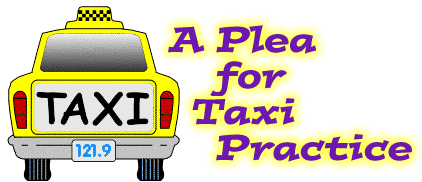 |
||||||||
| Issue Number 250 |
April
2000
|
|||||||
|
P.O. Box 189, Moffett Field, CA 94035-0189 |
||||||||
|
|
||||||||
 At
the recent 17th Annual International Aircraft Cabin Safety Symposium held
in Los Angeles, California, NASA-ASRS staff presented the results of a
study on commercial air passenger behavior problems reported to the ASRS
in 1998. Of the total 152 passenger behavior incidents reviewed, 77 reports
were submitted by cabin crew and 75 by cockpit crew. This selection assured
that the perspectives of both pilots and cabin attendants were represented.
At
the recent 17th Annual International Aircraft Cabin Safety Symposium held
in Los Angeles, California, NASA-ASRS staff presented the results of a
study on commercial air passenger behavior problems reported to the ASRS
in 1998. Of the total 152 passenger behavior incidents reviewed, 77 reports
were submitted by cabin crew and 75 by cockpit crew. This selection assured
that the perspectives of both pilots and cabin attendants were represented.
The ASRS study revealed that
passenger misconduct causes significant problems to flight deck crews
as well as cabin attendants. A "snapshot" of the study data
is revealing:
- In 43% of the passenger-related incidents, flight crews experienced some level of distraction from flying duties.
- In more than half of these distraction incidents, a pilot deviation was the consequence.
- In 22% of the total study incidents, a flight crew member left the cockpit to assist flight attendants in dealing with an unruly passenger.
- Flight crews diverted to an alternate airport to deplane the unruly passenger in 13% of the total incidents.
The following study report illustrates all of these factors:
- ...Passenger became unruly and drunk. The Captain advised him no alcohol, no touching flight attendant or passengers. The Captain returned to the cockpit and was then advised by the flight attendant that the passenger was brandishing a knife. [We initiated] a descent and diversion to [alternate airport]. Exceeded 250 knots below 10,000 feet due to gravity of situation. SWAT team removed passenger and he was taken to jail.
![]() Alcohol
intoxication was directly involved in 43% of the ASRS passenger misconduct
incidents. The study’s reporters frequently suggested that passengers
should be monitored for erratic behavior prior to boarding – particularly
for signs of intoxication – and denied boarding if their behavior
appears likely to continue during flight. Yet in some instances drunken
passengers were actually assisted in boarding by ground personnel:
Alcohol
intoxication was directly involved in 43% of the ASRS passenger misconduct
incidents. The study’s reporters frequently suggested that passengers
should be monitored for erratic behavior prior to boarding – particularly
for signs of intoxication – and denied boarding if their behavior
appears likely to continue during flight. Yet in some instances drunken
passengers were actually assisted in boarding by ground personnel:
- While boarding, the #1 Flight Attendant advised that we had a drunk passenger… In a very short time the #2 Flight Attendant advised me that he was a problem and that she wanted him off the plane. I called the ramp tower and asked for police and the proper people. He left the airplane peacefully... The agent working the flight was very helpful. All in all, this was no big deal except for one major problem. I later found out that the guy was so drunk that he had to be helped on the plane by the passenger assistance people. I don’t mean our [gate] agents – who of course would know better – but the people that push the wheelchairs and drive the carts. Someone needs to counsel these people that while their job may be to assist passengers, it is not to assist drunk passengers on the airplanes. I feel that if a guy is too drunk to walk on the airplane, then he is too drunk to ride for 2-1/2 hours on the same full airplane.
![]() The
ASRS study data indicated that cockpit crews are often faced with the
dilemma of whether to intervene in a passenger-caused disturbance. A
harrowing smoke-in-the-lavatory incident illustrates:
The
ASRS study data indicated that cockpit crews are often faced with the
dilemma of whether to intervene in a passenger-caused disturbance. A
harrowing smoke-in-the-lavatory incident illustrates:
- A passenger
on the flight became violent as we started the Visual Approach to
Runway 13L. I had the First Officer call for assistance on the ground
and continued the approach. I elected to land as soon as possible
and deal with the passenger on the ground. I landed the aircraft while
the struggle went on. When we cleared the runway the flight attendants
had trapped the passenger in the forward lavatory. I taxied to the
gate and shut down and went into the cabin to help.
As I stepped into the cabin the smoke alarm in the forward lavatory went off and smoke started to come out. The gate was not yet up to the aircraft, also the forward lavatory was between the passengers and the boarding door. I elected to have the aircraft stairs dropped and deplane the passengers onto the ramp. Police and Fire Department arrived and took control of the passenger after a struggle. The passenger had taken off his clothes in the lavatory and set fire to them in an attempt to set the aircraft on fire. The aircraft sustained little damage as the fire self-extinguished.
In this instance, the Captain’s decision not to intervene until after the aircraft had landed may have been due to company policy, or reluctance to lose the services of a cockpit crew member during the crucial approach and landing phases.
![]() In
1999, passenger behavior problems became the type of incident most frequently
reported to the ASRS by cabin crew personnel. The phenomenon of "air
rage" is justifiably attracting the attention of media, regulators,
and airlines. The ASRS study data show additional reasons to be concerned:
Commercial aircraft, and their passengers, are exposed to higher risks
of a serious incident or accident when pilots are distracted from flying
tasks, become involved in restraining unruly passengers, and are put
at risk of personal injury.
In
1999, passenger behavior problems became the type of incident most frequently
reported to the ASRS by cabin crew personnel. The phenomenon of "air
rage" is justifiably attracting the attention of media, regulators,
and airlines. The ASRS study data show additional reasons to be concerned:
Commercial aircraft, and their passengers, are exposed to higher risks
of a serious incident or accident when pilots are distracted from flying
tasks, become involved in restraining unruly passengers, and are put
at risk of personal injury.
 It’s
that spring-wonderful season of the year when pilots brush the cobwebs
off their flying skills – and airplanes – and vault joyfully
into the blue. Only (in a few unfortunate instances reported to ASRS)
to suffer engine fires, or fuel starvation, because the nesting habits
of small creatures went undetected during pre-flight. A Cessna pilot
titled this narrow escape from a merry mockingbird couple, "Feathered
Persistence":
It’s
that spring-wonderful season of the year when pilots brush the cobwebs
off their flying skills – and airplanes – and vault joyfully
into the blue. Only (in a few unfortunate instances reported to ASRS)
to suffer engine fires, or fuel starvation, because the nesting habits
of small creatures went undetected during pre-flight. A Cessna pilot
titled this narrow escape from a merry mockingbird couple, "Feathered
Persistence":
- Preflight after maintenance. Noticed on walkup to aircraft (C-210) something hanging down in front of the right front cylinder. Bird’s nest. Pulled out sticks, grass, bent safety wire and plastic ties – could not get it all. Uncowled aircraft under the watchful eyes of 2 mockingbirds. Removed remainder of nest. Mechanic and I re-cowled the aircraft and walked back to his office. Three minutes later, I walked back out and noticed the flicker of a tail inside the cowl. I shooed the bird out. Found more nest material. Cleaned it out and walked around to the pilot’s seat. While adjusting seat belt, the bird flew back inside. How do you win this? I didn’t want to hurt the bird, so I left fuel cut off and cranked the starter. Out flew the bird. I primed and started up. The bird flew into the cowl of another Cessna as I made my getaway.
Our reporter came up with a creative and creature-friendly solution that other pilots in similar circumstances may want to consider. Cowling covers that restrict access to the engine compartment are another possibility.
 One
of the most common insect problems reported to ASRS is the plugging
of fuel tank vent tubes by mud daubers and other insects. The usual
result is an emergency landing due to fuel starvation, as experienced
by this pilot:
One
of the most common insect problems reported to ASRS is the plugging
of fuel tank vent tubes by mud daubers and other insects. The usual
result is an emergency landing due to fuel starvation, as experienced
by this pilot:
- Fuel at time
of departure was 56 gallons, of which 40 was in the tip tanks…
Climbed to cruise altitude of 5,500 feet MSL, leveled off, turned
off boost pump. Engine lost power about 1-1/2 minutes (estimated)
after changing tanks... Established glide to nearest airport and commenced
restart procedure…and declared emergency. Engine restarted at
500 feet AGL on short final… Landed without incident, with full
power available…
Cause of engine-out was determined by mechanic at FBO to be "leaf roller" (flying insect) debris packed into right tip tank vent tube, totally obstructing air flow in the vent. Tank vents…open to air at a point under the wing attachment point. There are no screens on the vent openings. The vent was cleared, and the left vent checked and also cleared of similar debris (although not completely closed), and the aircraft was returned to service…
The preflight will no longer rely on an operating test of the fuel selector as the sole determinant of the condition of the fuel tank vent system… A physical check of each vent is now part of the preflight checklist.

The FAA has made runway incursions a top safety priority through its Runway Incursion Reduction Program (RIRP). As part of this effort, it is evaluating technology options that show promise for helping to increase the safety of aircraft and vehicle movement on the airport surface.
A General Aviation pilot involved in a runway incursion recently submitted a suggestion to ASRS for a taxi "trainer":
- I’ve
just been involved in a runway incursion that could have been very
ugly, and it caused me to think about the problem. Why did I do what
I did? The answer is simple – too little experience hearing and
responding to complex taxi instructions and seeing and interpreting
confusing airport signage. I feel more comfortable in the air following
a sectional and finding a little airport than I do on the ground trying
to find taxiway "Charlie."
So I was thinking about how to get more experience, and the problems are clear. First, going to a seminar (which I’ve done)…I was still lacking actual experience. Second, if I’m going to use or rent a plane at $75 or $100 an hour, I want to fly, not taxi. Third, taxiing is hard on airplanes; plugs foul, tires and brakes wear out, there is the risk of hitting something with a wing, etc. As I was thinking about these problems, a simple answer became clear – use a vehicle for practice that is designed for taxiing and is cheap to operate – use a CAR.
Why not put a nav/com [radio] in a car, put a…sign on the top with flags and perhaps a strobe, and have students, as well as seasoned pilots, "taxi" around the airport under the direction of ground control and local control. Students who haven’t received a taxi sign-off would be required to have a CFI in the car with them…
The point here is that even if a pilot has 200 hours in his logbook, he probably has fewer than 10 hours taxiing… I know if such training had been available to me, I would have used it.
The idea of a taxi trainer suggests other possibilities: a taxi "simulator," interactive computer-based training aids, and training videotapes. As part of its ‘Back to Basics’ series, for example, the FAA has made a 25-minute videotape, "Aircraft Surface Movement," which describes the appearance and purpose of newly standardized signs at large airports.
The simplest solution of all: pilots new to controlled airports should request progressive taxi instructions on the first contact with ATC after landing, and before taxi-out. Telling ATC, "We’re strangers here," can open the door to helpful service and avoid a runway incursion incident.
|
|
|---|
| Runaway electric trim on an Avro RJ85 |
| Multiple incidents of MEL non-compliance off the gate |
| Runway incursion and signage problems at an airport |
| B-767 bulkhead charring caused by an airphone short |
| Radio frequency disruption of a DC-9 pressure controller |
|
|
|
|---|---|
|
Air
Carrier/Air Taxi Pilots
|
2,195
|
|
General
Aviation Pilots
|
575
|
|
Controllers
|
77
|
|
Cabin/Mechanics/Military/Other
|
180
|
|
TOTAL
|
3,027
|